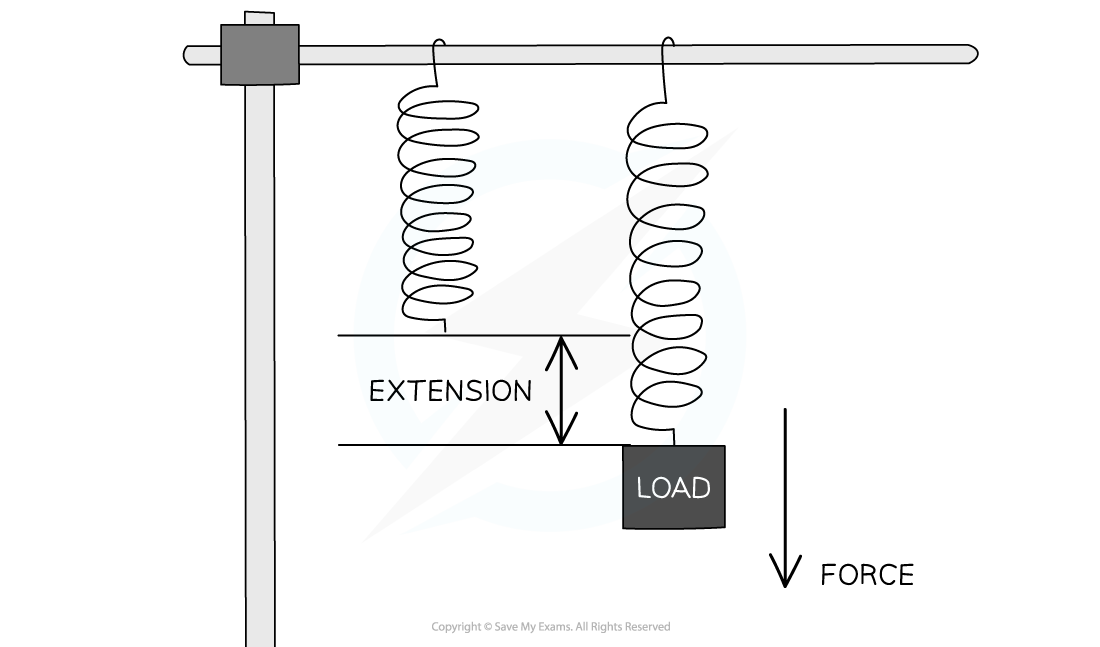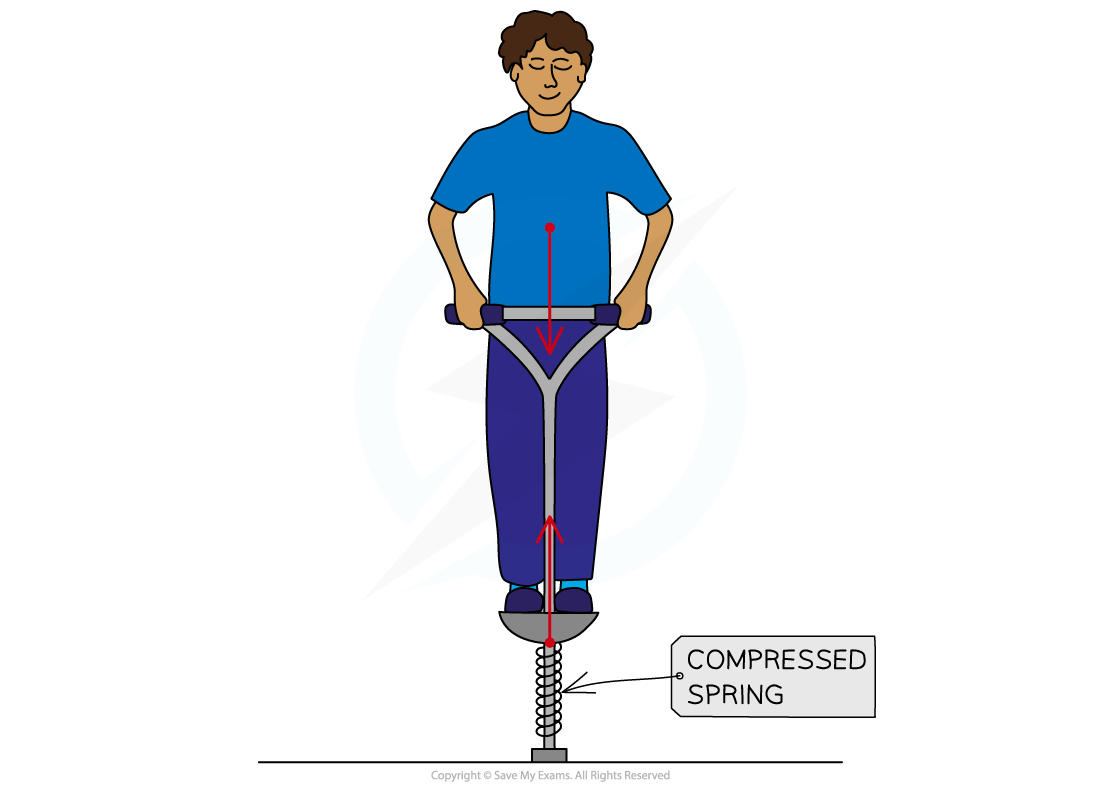Hooke's Law (Cambridge (CIE) O Level Physics): Revision Note
Exam code: 5054
Hooke's Law
Hooke’s law states that:
The extension of a spring is proportional to the applied force
Where:
F is the force applied
k is the spring constant
x is the extension of the spring
The spring constant is the force per unit extension
The units are N/m
The spring constant is a measure of how stiff the spring is
Directly proportional means that as the force is increased, the extension increases
If the force is doubled, then the extension will double
If the force is halved, then the extension will also halve
The limit of proportionality is the point beyond which the relationship between force and extension is no longer directly proportional
This limit varies according to the material

Hooke's Law states that a force applied to a spring will cause it to extend by an amount proportional to the force
Worked Example
The figure below shows the forces acting on a child who is balancing on a pogo stick.The child and pogo stick are not moving.

The spring constant of the spring on the pogo stick is 4900 N/m. The weight of the child causes the spring to compress elastically from a length of 40 cm to a new length of 33 cm.
Calculate the weight of the child.
Answer:
Step 1: List the known quantities
Spring constant, k = 4900 N/m
Original length = 40 cm
Final length = 33 cm
Step 2: Write the relevant equation
Step 3: Calculate the extension, x
Step 4: Convert any units
Since the spring constant is given in N/m,
must be in metres (m)
Step 5: Substitute the values into the Hooke's Law equation

Unlock more, it's free!
Did this page help you?